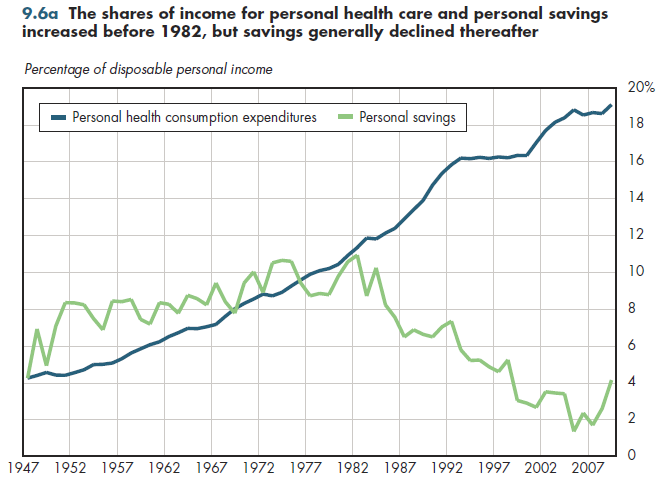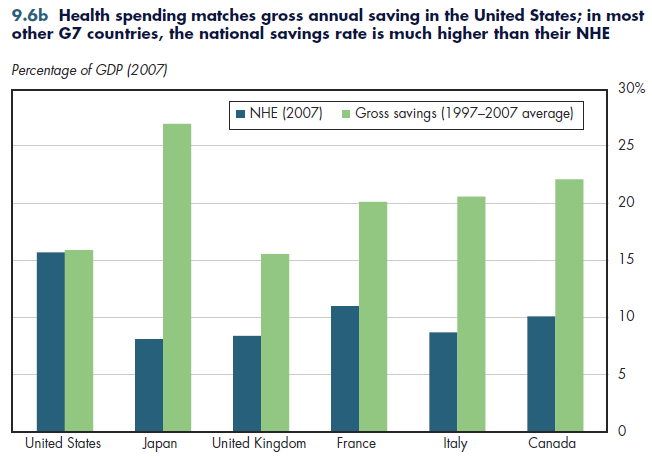For at least 25 years, rising health expenditures generally have been matched by a parallel decline in the personal savings rate (figure 9.6a). Capital stocks are the accumulation of investment flows, the financing of which depends on savings. Total savings for the nation encompass private savings, government savings, and foreign investment.

Measured relative to disposable (post-tax) personal income, the personal savings rate generally was on an upward path for 35 years starting in 1947 (figure 9.6a). Taken together, Americans typically saved more than they spent on personal health care during this period. After 1982, there was a sharp reversal in this trend. The savings rate generally declined even as personal health spending continued to rise. Mathematically, the positive slope of the personal health spending line is almost as steep as the negative slope of the personal savings line. Statistically, approximately 80 percent of the variation in the personal savings rate can be explained simply by knowing the share of disposable income allocated to personal health spending.
On average, gross annual saving in the United States is almost identical to its level of national health expenditures. In contrast, the savings rate among the rest of its G7 competitors generally is much more than their spending on health care (figure 9.6b).

The relationship between savings and health spending is not nearly as tight at the cross-national level as it is within the United States over time. Although the nation that has the lowest share of GDP devoted to health spending also has the highest savings rate (Japan), the nation that has the next-lowest health spending also has a savings rate almost identical to that of the United States (the UK). In terms of comparable purchasing power, U.S. GDP per capita is much higher than among its biggest competitors. To match U.S. savings in real per capita terms would unavoidably require these nations to devote a higher share of GDP to savings.
Download PowerPoint versions of both figures.
Download Excel workbooks used to create
Figure 9.6a Table and
Figure 9.6b Table.
[Note that you’d have separate links for each set of tables] Figures 9.6a and 9.6b were created from the following tables
(the workbook includes all supporting tables used to create these tables):
- Fig. 9.6a: Table 9.6.1. Personal Saving and Personal Health Care Expenditures as a Percentage of Disposable Personal Income, 1947-2009
- Fig. 9.6b: Table 9.6.2. Gross National Saving and National Health Expenditures as a Percentage of GDP, Selected Countries, 2007
- Author's calculations.
- Department of Commerce. Bureau of Economic Analysis.
- Organisation for Economic Co-operation and Development.











